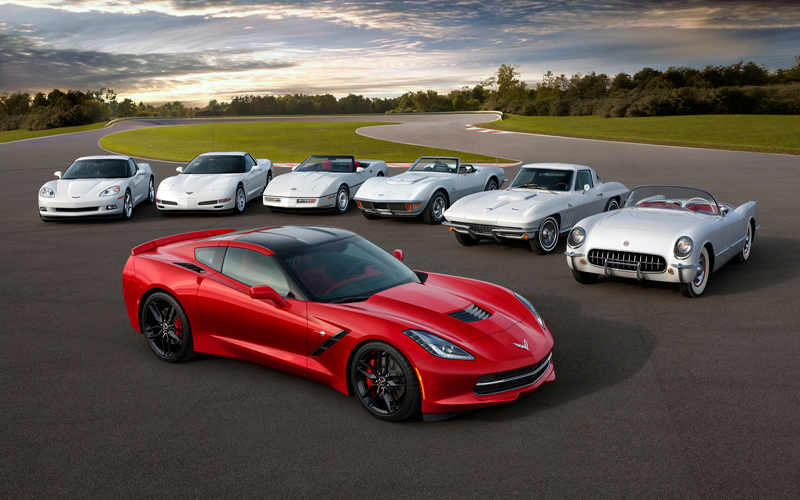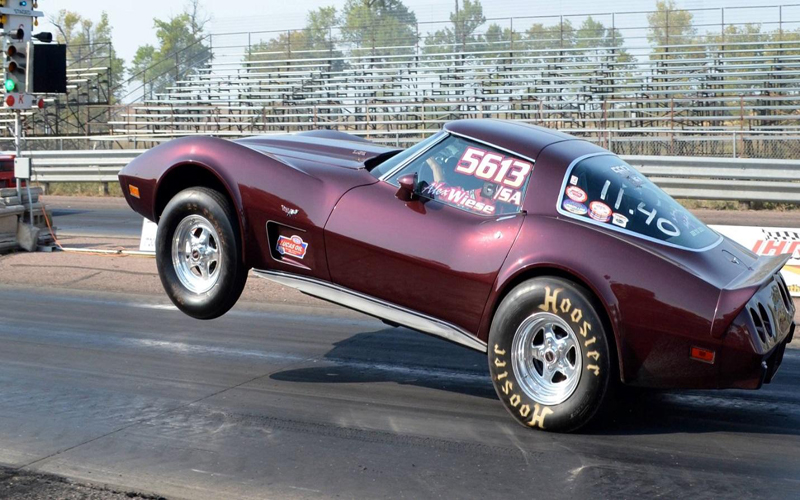Top 7 Generations of Corvette
Corvettes are awesome; they are the American sports car. The question is, which ones are the best? Some people love the classic split-window, and others are all about that modern LSX or LTX small-block Chevy power. Here are the top 7 generations of Corvette, in no particular order.
1. C6
With the C6, GM sent a definitive message to the Europeans, “We will crush the lap times of any Euro, even if it costs twice as much.” Starting with the regular C6, equipped with the Z51 handling pack, GM went to the famed Nurburgring racetrack in Germany and set a blistering 7:59. They later returned with the track-focused Z06 model and knocked out a 7:42 lap. As the C6 was further developed, Chevy came back with the big guns, the supercharged ZR1, and crushed all with a 7:19 lap.
2. C5
 Introduced in 1997, C5 brought the hot rod world one of the world’s most venerated engines: the 5.7L LS1 V8. That alone cements the C5 as a legend, but it gets better; C5 generation ‘Vettes are reliable, readily available and cheap to purchase, and are such well-rounded machines. You can kick ass at the track, get 30 MPG cruising on the highway, and drive it for hundreds of thousands of miles. The C5 shines as the ultimate everyman’s supercar.
Introduced in 1997, C5 brought the hot rod world one of the world’s most venerated engines: the 5.7L LS1 V8. That alone cements the C5 as a legend, but it gets better; C5 generation ‘Vettes are reliable, readily available and cheap to purchase, and are such well-rounded machines. You can kick ass at the track, get 30 MPG cruising on the highway, and drive it for hundreds of thousands of miles. The C5 shines as the ultimate everyman’s supercar.
3. C1
The progenitor of all in the kingdom of Corvette. C1 was a comfortable boulevardier that worked as a test bed for Chevy’s engineers and molded the sporting shape of Corvettes to come. It started with a straight-6 and an automatic but, over time, became the home of the small block Chevy V8 a manual transmission. Its drop top and suave looks made it the King of the Cruise in 1950’s Americana.
4. C2
C2 picked up where C1 left off, but where the C1 was a testbed for consumer goods and made for cruising the boulevard, Chevrolet decided that the C2 was going to be a factory hotrod. Aggressive styling, with the split-window rear glass, the Stingray name, disc brakes on all four corners, independent rear suspension and the first mention and testing of the oft-rumored “mid-engined” Corvette. Chevy proved that Corvette had the goods to hang with the best of the factory racers.
5. C3
The astronauts drove them! Oh, you needed more convincing? Early C3 ‘Vettes were kings of the drag strip. In the early ‘70’s, big block power was in. Just on the cusp of performance choking smog controls, these behemoth engines made in excess of 500 horsepower, with the rare “ZL1”-equipped ‘Vettes knocking out 10-second quarter miles. Later ones may have been hampered by early smog controls and crash safety regulations, but the broad fender, short tail look remained.
6. C7
The latest and greatest can be yours for less than $60,000. It brought back the Stingray name and has the most aggressive styling to come from the Corvette team in the past 35 years. It also brought back another name and redeemed it: LT1. The new LT1 is a technical powerhouse, it’s lightweight, and compact dimensions house 450+ horsepower of greatness. The modern Z06 has adjustable aero, a 6.2L supercharged monster engine, and the ability to embarrass anything Ford, Chrysler, or most of the vehicles Europe puts out.
7. C4
The C4 was a big leap from the C3 ‘Vette, in terms of technological prowess and design. Do you like the C5 and C6 Corvettes? Thank the C4. GM made a big deal about the computer-aided development of the C4, and the car reflects that; It is appreciably more modern in design than its predecessors. It took a bit of time to fine tune it, but by the end of its life cycle, the C4 had revived the ZR1 name and came out with a very innovative engine co-designed with Lotus. It was a 4-valve per cylinder and dual overhead cam LT5 V8 engine cranking out over 375 horses: the only ‘Vette to this day to feature this technology.
For more information, How-to articles and diagnostic guides, visit https://www.corvetteforum.com/how-tos .







